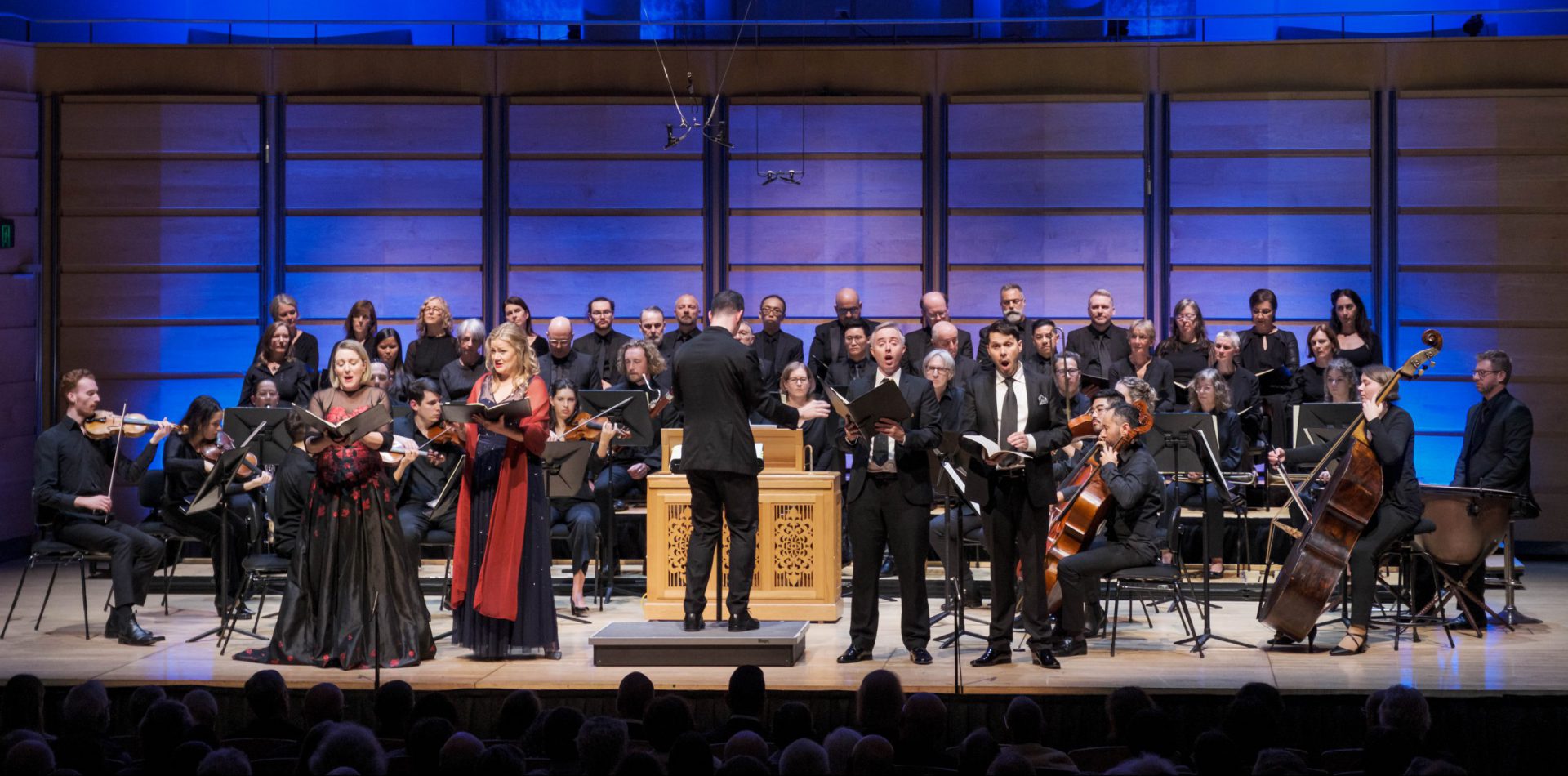In this concert, the Sydney Chamber Choir put Bach and Mozart in dialogue with one another, and with contemporary Australian music in between.
It styled itself as a concert for ‘Mozart’s Requiem’ but the introduction – featuring Bach’s Singet dem Herrn and Mozart’s Ave verum corpus – were no small fare.
Singet dem Herrn ein neues Lied is a psalm setting literally meaning “Sing unto the Lord a New Song”. There is something deliciously self-referential about setting this text to music. That inspired no less than Schutz to set it to music and, not to be outdone, Bach saw it as an opportunity to instruct his students, and posterity, how to master the motet form.
There was no instrumental accompaniment in this performance of the motet, so the Sydney Chamber Choir rested on its own strength. Sam Allchurch chose not to make the falling ‘Sin-get’ too staccato or bell-like. Instead, there was a natural flow of the narrative. Great force is applied tutti, but especially by the male voices, to the words ‘Israel freue sich des’, and then again to ‘Die Kinder Zion’. But when the aria section is sung in the second part it seemed at times that the tenors were too shaky or diffident.
The motet is structured as though it were a concerto – in three rather discrete ‘movements’ alternating between fast and slow. So with the third, ‘Lobet den Herrn in seinen taten’, dance rhythms abound. That is no surprise. As Gardiner has long showed, song, dance and worship were one for Bach. The Choir did not falter despite the fast-paced sinuous musical lines, dense subject upon counter-subject, and rather angular themes such as the especially angular ‘Hallelujah’ that closes the motet. It recalls the similarly angular “Halleluja” that closes the fifth movement of BWV 4, and which perhaps draws upon the four syllables of that word to evoke the cruciform.
Iain Grandage’s Why Do We Exist? begins strikingly with strings and whistling evoking birdsong. The effect intensifies as the voices layer over each other in lush chords that give a dreamy sparse effect. The choir gradually repeats the word ‘universe’ each time with greater force as the strings repeat ascending scales. The piece closes the way it began, to give the effect of a cycle. It was a veritable meditative experience.
Mozart’s Ave verum corpus was next. To put Mozart’s choral works alongside Bach’s is one thing. To put them alongside Bach’s Singet dem Herrn is even more profound. There is a famous story that Mozart, upon hearing a performance of Bach’s Singet dem Herrn exclaimed “now there’s music you can learn from!” and proceeded to study the score.
But where Bach’s Singet dem Herrn is busy and ornate, Mozart’s is sparse and simple. He brings to bear his unique sense of musical economy on the text. The melody is straight, simple and paced. The phrasing is short, and declamatory gestures abound. The overall effect is warm, and the Choir begins, as Mozart would have it, sotto voce.
But after the interval came the grander masterpiece – his famous Requiem. The soloists emerged centre stage – David Greco, Richard Butler and, fresh from their recent performance as the Heavenly Sopranos, Helen Sherman and Celeste Lazarenko.
The work begins with an instrumental lament that introduces the basal motif which is imitated throughout by the woodwinds. The motif which resembles the tune to Nun komm der Heiland, based as it is on a latent augmented fourth, which presents so many musical possibilities in a sombre setting such as this. Lazarenko emerges as the first soloist with a crystal-clear voice.
The Kyrie centres upon an angular theme followed by a motoric counter-subject. It is redolent of Handel. The coloratura in the fugue restates the motif from the introduction. But the great shock is the dissonant false ending, which the choir executed with great force. This all prepared the audience for the Dies irae that followed, which was performed with unrelenting force by both choir and orchestra. It was one of the highlights of this piece.
David Greco engages in a delightful but imposing dialogue with trombone. His tone is engaging engaging and his diction on point. Other highlights include thrilling passages on cello by Anton Baba in the Recordare and the exhilarating cacophony that was the Confutatis. The choir’s dynamic control was on full display in the first line of the Domine Jesu Christe, which ranged from quiet to loud to quiet again in the space of a few bars.
